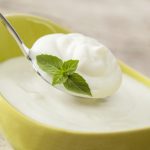Lactobacillus M.R.S. broth is a non-selective medium used for the rapid cultivation and enumeration of Lactobacillus spp. (lactic acid bacteria).
The broth was originally described in a paper by de Man, Rogosa and Sharpe in 1960.
The composition for Lactobacillus M.R.S. Broth is:-
| Formula | g/l |
| Proteose peptone | 10.0 |
| Beef extract (proprietary) or other such as Lab-Lemco’ powder | 8.0 – 10.0 |
| Yeast extract | 4.0 |
| Glucose (dextrose) | 20.0 |
| Sorbitan mono-oleate, polysorbate 80 or Tween 80 | 1ml |
| Dipotassium hydrogen phosphate | 2.0 |
| Sodium acetate 3H2O | 5.0 |
| Triammonium citrate | 2.0 |
| Magnesium sulphate 7H2O | 0.2 |
| Manganese sulphate 4H20 | 0.05 |
| pH 6.2 +/- 0.2 @ 25 °C |
The powder has a yellow homogeneous appearance which produces a dark amber coloured solution on dissolving with a slight milkiness.
Method of Preparation Of Lactobacillus M.R.S. Broth:
The Oxoid method involves adding 52 – 55g of the MRS Broth formula to 1 litre of distilled water at around 60 °C. Mix until completely dissolved. Dispense into final containers and sterilise by autoclaving at 15 lbs pressure (121 °C) for 15 minutes.
The medium is used for confirmatory identification tests of lactobacillus isolated on MRA Agar and for the enumeration of bacteria by the Miles and Misra technique. More specifically, the broth is ideal for identification of these particular bacteria which have temperature dependence, growth in 4% NaCl, growth in 0.4% Teepol, etc.
Nutrition comes from a mix of glucose, beef and yeast extracts and peptones. The B vitamins all comes from the yeast extract with fatty acids such as Tween 80, minerals such as magnesium and manganese sulphates which help promote growth. Glucose is a reliable energy source. Selectivity against streptococci and moulds is provided by ammonium citrate and sodium acetate.
Occasionally, sterilisation of this medium at 121oC for 15 minutes, in some autoclaves, may cause the pH to fall outside of the specified pH limits 6.4 +/- 0.2. In these rare cases, adjustment of the medium using acetic acid or sodium hydroxide is recommended.
Reference
Sharpe, M., Elisabeth, Fryer T. F. and Smith D. G. (1966) Identification of the Lactic Acid Bacteria in `Identification Method for Microbiologists Part A’ (Gibbs B. M. and Skinner F. A. eds.) London and New York, Academic Press. pp. 65-79.


Leave a Reply